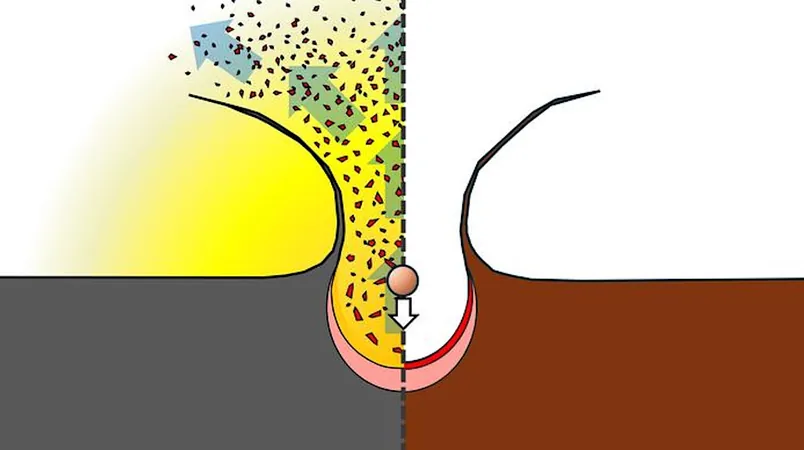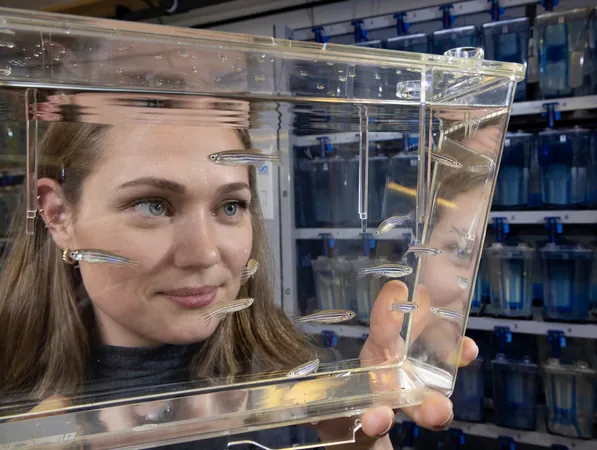
Blast from the Past: Why Carbon Meteorites Leave Less Impact Evidence
2025-04-27
Author: John Tan
A Cosmic Mystery Unveiled
A groundbreaking discovery from Kobe University has finally shed light on a 30-year-old enigma in planetary science: why carbon-rich meteorites appear less shocked than their non-carbon counterparts. The findings suggest that gases generated during meteorite impacts are propelled into space, leaving behind less detectable evidence of the collision.
Understanding the Solar System's History
The study offers critical insights into the solar system's history. Planetary scientists have long been baffled by the apparent discrepancies in the impact signatures of carbon-containing and non-carbon meteorites, leading to the question: do the former collide at lower speeds?
The Catalytic Role of Carbon
Astrophysicist KUROSAWA Kosuke, the driving force behind the research, reveals that he was intrigued by this impact phenomenon termed 'shock metamorphism.' He initially referenced a theory from two decades ago, which suggested that vapor released from water-containing minerals during impacts could be responsible for the observed differences.
Innovative Research Methods
Determined to explore the interaction of carbon materials during impacts, Kurosawa utilized a state-of-the-art two-stage light gas gun to simulate meteorite collisions. This device allowed his team to collect untainted gas samples produced by the high-speed impacts on meteorites mimicking both types.
Explosive Revelations
Their research, now published in the journal *Nature Communications*, reveals that impacts on carbon-rich meteorites generate scorching gases like carbon monoxide and carbon dioxide. The resulting explosions are powerful enough to eject shock-altered material into space, explaining the lack of visible shock evidence.
Future Missions to Ceres?
Interestingly, the study also posits that larger celestial bodies, such as the dwarf planet Ceres, might retain this expelled material due to their stronger gravitational fields. "We believe Ceres should hold highly-shocked particles from such impacts," Kurosawa explains, setting the stage for future exploration missions.
Support and Collaboration
This fascinating research was made possible with funding from various science organizations and involved collaborations with specialists from the Chiba Institute of Technology and Imperial College London, showcasing the power of interdisciplinary efforts in unlocking cosmic mysteries.
A Bright Future for Planetary Science
Kobe University, where this revolutionary research originated, is a leading institution in Japan, known for fostering innovation and addressing societal challenges through comprehensive research across science disciplines. This latest revelation marks a significant leap in our comprehension of meteorite behavior and could reshape future planetary exploration.




 Brasil (PT)
Brasil (PT)
 Canada (EN)
Canada (EN)
 Chile (ES)
Chile (ES)
 Česko (CS)
Česko (CS)
 대한민국 (KO)
대한민국 (KO)
 España (ES)
España (ES)
 France (FR)
France (FR)
 Hong Kong (EN)
Hong Kong (EN)
 Italia (IT)
Italia (IT)
 日本 (JA)
日本 (JA)
 Magyarország (HU)
Magyarország (HU)
 Norge (NO)
Norge (NO)
 Polska (PL)
Polska (PL)
 Schweiz (DE)
Schweiz (DE)
 Singapore (EN)
Singapore (EN)
 Sverige (SV)
Sverige (SV)
 Suomi (FI)
Suomi (FI)
 Türkiye (TR)
Türkiye (TR)
 الإمارات العربية المتحدة (AR)
الإمارات العربية المتحدة (AR)